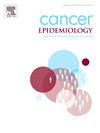Non-smoking women need more attention in lung cancer screening: A real-world study from China
IF 2.3
3区 医学
Q3 ONCOLOGY
引用次数: 0
Abstract
Background
Seniors with a history of heavy smoking were defined as high-risk populations for lung cancer according to the National Comprehensive Cancer Network (NCCN) Lung Cancer Screening Guideline. We did a real-world study to explore the efficacy of the current NCCN Lung Cancer Screening Guidelines in the context of the real-life Chinese populations and possible directions for improvement.
Methods
We collected hospital data from 2595 consecutive patients first diagnosed with lung cancer, comprising 1288 men and 1307 women. Analysing the distribution of lung cancer tumour characteristics and risk factors in different age and sex groups. Additionally, the number and proportion of high-risk populations in different sexes were calculated based on the NCCN Lung Cancer Screening Guidelines.
Results
There were significant differences in the distribution of tumour characteristics and risk factors across sex and age groups. The proportions of lung adenocarcinoma and non-smokers were significantly higher in female patients compared with male patients. Older male patients showed significantly higher proportions of squamous cell carcinoma and heavy smokers than younger male patients. According to the NCCN screening criteria, there were 649 high-risk men and only 12 high-risk women. The proportion of high-risk populations in the aged lung cancer patients was 58.6 % in men and 1.2 % in women.
Conclusions
In China, only a minority of female lung cancer patients meet the definition of the high-risk populations for the NCCN lung cancer screening guidelines. Future lung cancer screening strategies for the Chinese population should focus more on younger populations and pay greater attention to non-smoking women to avoid high rates of underdiagnosis.
非吸烟女性需要更多关注肺癌筛查:来自中国的真实世界研究
根据国家综合癌症网络(NCCN)肺癌筛查指南,有大量吸烟史的老年人被定义为肺癌的高危人群。我们进行了一项现实世界的研究,以探讨当前NCCN肺癌筛查指南在现实生活中的中国人群中的有效性和可能的改进方向。方法收集2595例连续首次诊断为肺癌患者的医院资料,其中男性1288例,女性1307例。分析肺癌肿瘤特征及危险因素在不同年龄和性别人群中的分布。此外,根据NCCN肺癌筛查指南计算不同性别高危人群的数量和比例。结果不同性别和年龄组的肿瘤特征和危险因素分布有显著差异。女性患者肺腺癌和不吸烟者的比例明显高于男性患者。老年男性患者鳞状细胞癌和重度吸烟者的比例明显高于年轻男性患者。根据NCCN筛查标准,男性有649例,女性只有12例。老年肺癌高危人群中男性58.6% %,女性1.2 %。结论在中国,只有少数女性肺癌患者符合NCCN肺癌筛查指南中高危人群的定义。未来针对中国人群的肺癌筛查策略应更多地关注年轻人群,并更多地关注不吸烟的女性,以避免高漏诊率。
本文章由计算机程序翻译,如有差异,请以英文原文为准。
求助全文
约1分钟内获得全文
求助全文
来源期刊

Cancer Epidemiology
医学-肿瘤学
CiteScore
4.50
自引率
3.80%
发文量
200
审稿时长
39 days
期刊介绍:
Cancer Epidemiology is dedicated to increasing understanding about cancer causes, prevention and control. The scope of the journal embraces all aspects of cancer epidemiology including:
• Descriptive epidemiology
• Studies of risk factors for disease initiation, development and prognosis
• Screening and early detection
• Prevention and control
• Methodological issues
The journal publishes original research articles (full length and short reports), systematic reviews and meta-analyses, editorials, commentaries and letters to the editor commenting on previously published research.
 求助内容:
求助内容: 应助结果提醒方式:
应助结果提醒方式:


